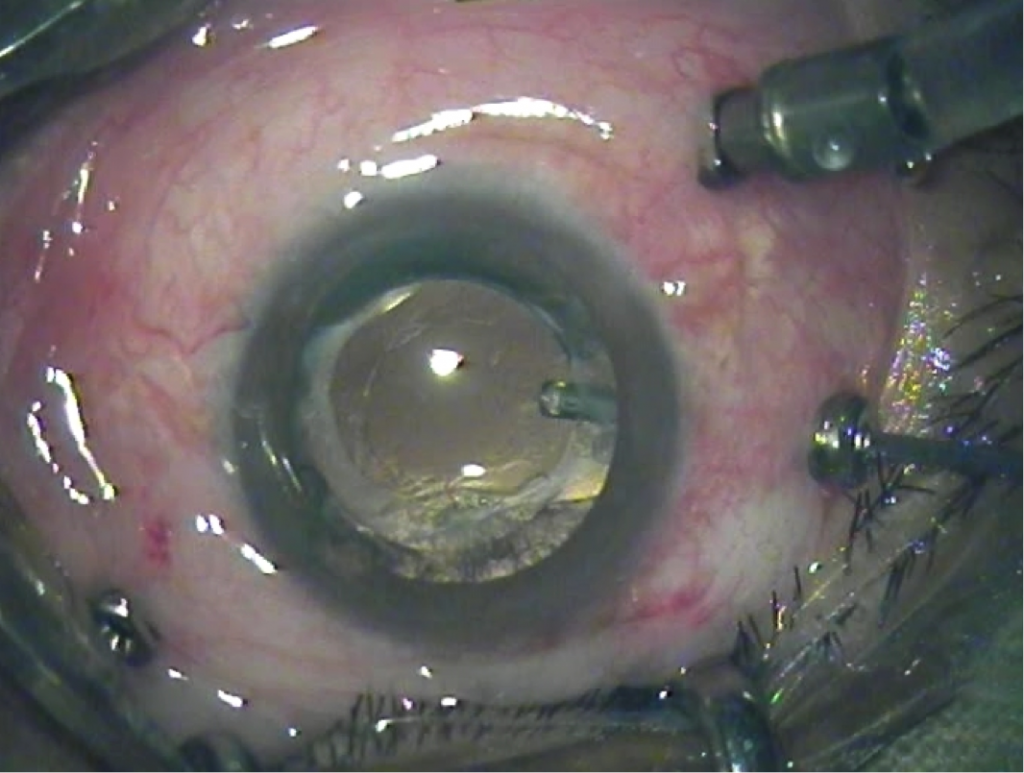Cataract Surgery – Risks
Cataract surgery is actually a safe procedure with high success rates, but risks and complications may occur in some patients. The risks and complications developed after cataract surgery can be treated easily. The risks associated with cataract surgery are mostly suffered by people with other eye problems such as severe myopia, diabetic retinopathy, or uveitis. If the patient is suffering from breathing problems or under medication for prostate problems, then he or she has a higher risk of complications.
Intra-ocular Vitrectomy

Image courtesy: en.wikipedia.org
The common complications that may appear after the cataract surgery are:
Retinal Detachment
In this case, retina gets detached from the inner eye wall and causes partial or complete blindness. During the cataract surgical procedure, pressure inside the eye changes resulting in slits in the retina. The tears in the retina allow the vitreous gel to pass through them and make the retina to separate out from the eye wall. Retinal detachment is usually found in patients with high myopia prescription and those who have not undergone any eye surgery before. Retinal detachment can be treated with the help of another surgery.
Cystoid Macular Edema
Sometimes, the retina swells after the cataract surgery causing inflammation of the eye. Generally, anti-inflammatory drops and steroids will help to treat the inflammation. In some cases, the macula becomes swollen as a result of intraocular inflammation. The surgeon will prescribe suitable eye drops to cure macular edema. In few cases, steroid injections or a surgical procedure (intraocular vitrectomy) is required to treat macular edema.
Choroidal Hemorrhage
During the surgical procedure, acute bleeding may occur in the choroid. Choroid is a part of the eye where delicate blood vessels are seen. The bleeding occurs when these blood vessels rupture. Choroidal hemorrhage is common in older patients and its occurrence is not predictable. In certain cases, the bleeding will be localized and can be treated. In severe cases, the patients may suffer from vision loss.
Endophthalmitis
Endophthalmitis occurs in 1 out of 1000 cases, which is a severe infection caused by bacteria during the initial few days or weeks after performing the cataract surgery. If the patient does not consult the ophthalmologist quickly, then the patient may lose vision. As the patients have to apply strong antibiotic drops after the procedure, patients usually will not get into trouble due to infections. If endophthalmitis occurs even after the precautions, then stronger antibiotics are injected into the eye to cure the infection.
Dislocation of Intraocular Lens
Dislocation of intraocular lens is another complication that may happen after cataract surgery. The dislocation of intraocular lens can cause double vision. If the lens is dislocated badly, then the acuteness of the vision will decrease greatly. The dislocation of the lens is caused by the rupture of the capsular bag. The lens may dislocate even without any valid reasons or complications. If the arms used to hold the lens is not positioned properly, then the lens might get dislocated. An enhancement surgery has to be performed to correct this complication.
Opacity of the Posterior Capsule
Posterior capsule opacity is a common complication occurs after the cataract surgical procedure. The opacity of the posterior capsule may occur even months or years after the procedure. YAG capsulotomy is a laser procedure used to correct the opacity of the posterior capsule.